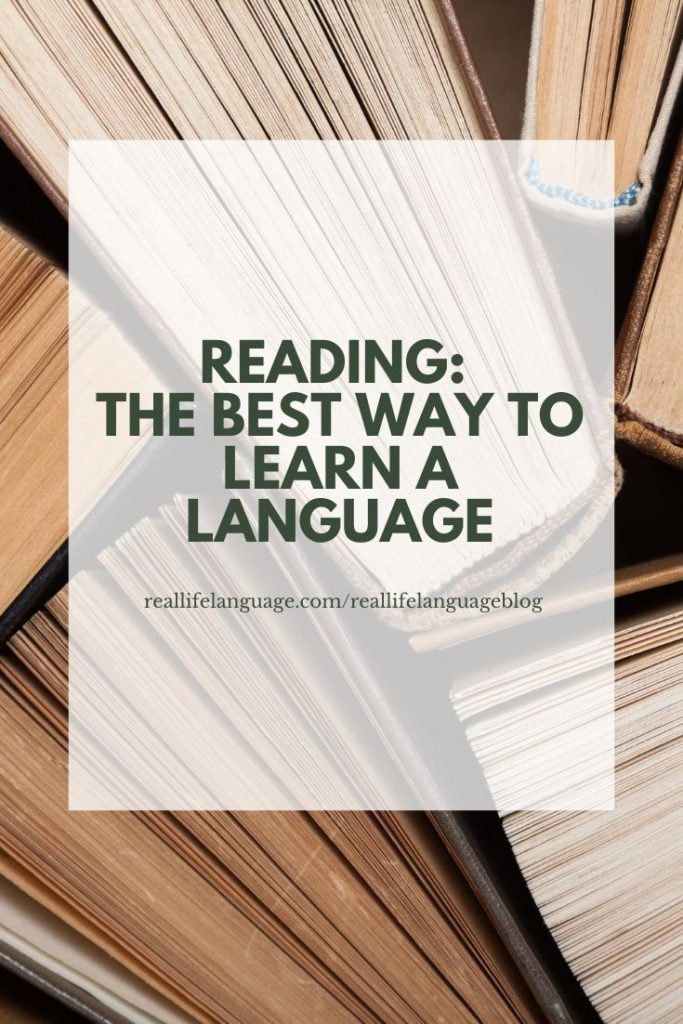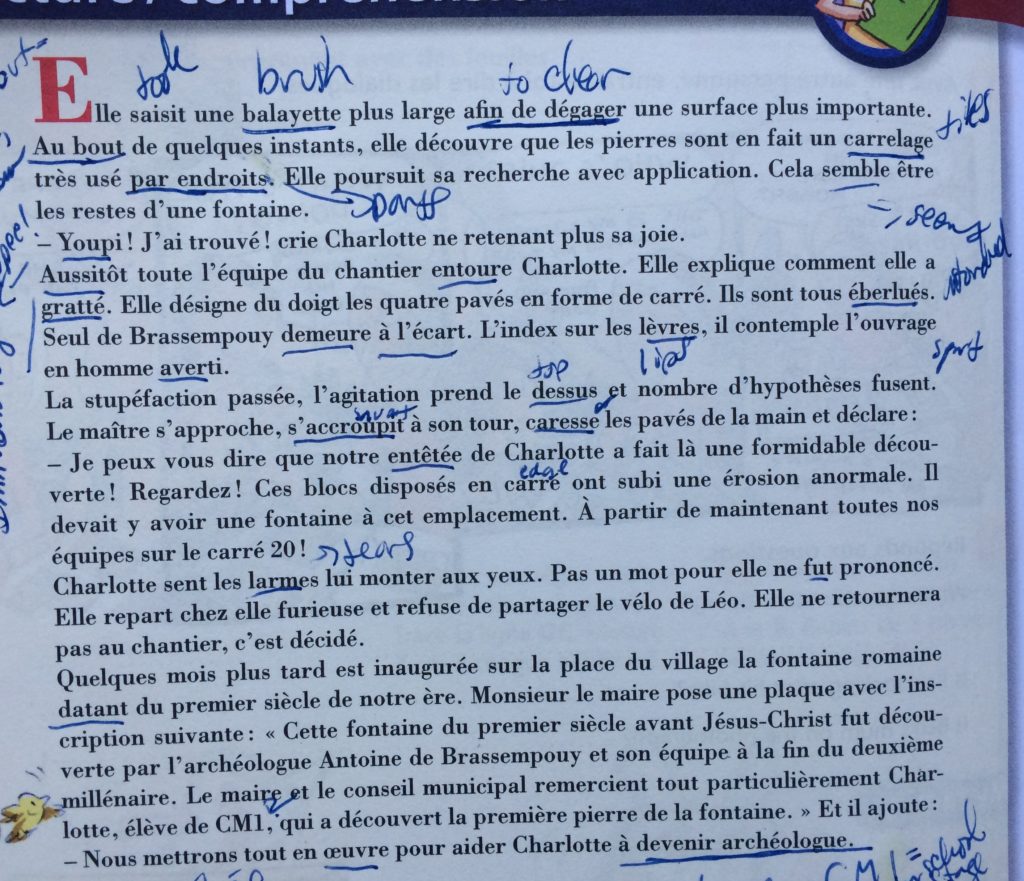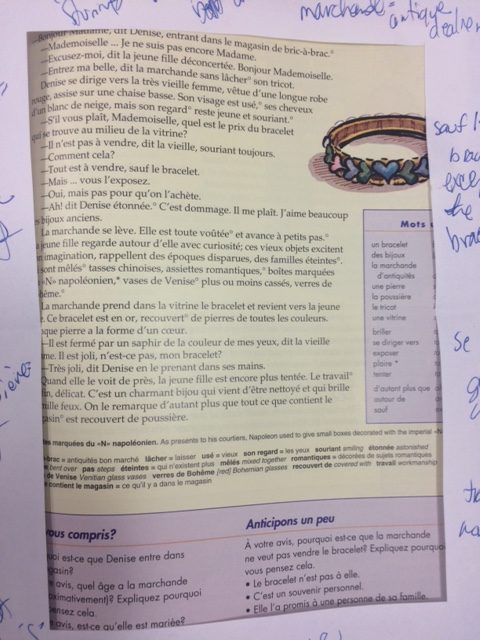Reading: The Best Way to
Learn a Language
Regular reading is one of the best ways to learn a language. Dr. Stephen Krashen wrote a paper in 2017 on two hyperpolyglots. The subjects of his study each spoke more than 15 languages. They both cite extensive reading as a major factor in their success.
Many of us have FVR time and/or dedicated reading assignments regularly in our classes. I think it is important to offer some broad criteria for them to find their own reading based on topics they enjoy. Think recipes, music, sports.
I wanted to share a few tools for reading in a new language. The first tip is for non-teachers.
Reading in a foreign language is the best way to grow your vocabulary and learn grammar, resulting in naturally acquired language. Reading authentic products from the target language culture also gives you the opportunity to learn a great deal about culture. Having said that, reading in a new language is completely unique. Here are some tools for understanding the process of reading and how to read in a foreign language. They range from low-tech to hi-tech.
Understanding the Process of Reading
Understanding the process of reading entails understanding how reading is different in your own language and in the new language, and how to use those differences to really advance your vocabulary.
When we learn how to read in our first language, we’re learning what the language we speak looks like. Reading is actually interpreting a visual representation of our language. When we teach people how to read in their own language, we aim for a range of between 89% and 94% of understanding. If you understand more than 94%, the piece is too easy for you and you’re not going to problem-solve and become a better reader. If you understand less than 89%, it’s going to be too difficult and you’re not going to understand everything. We also look for true comprehension of the content (not just decoding) and aim for around 95%.
Obviously, when you’re going to read in a foreign language, your rates understanding are going to probably be far lower than that (40% or 50%), so you can’t approach it the same way. Until you are fairly advanced, you can’t expect to be able to pick something up, walk away and get something out of it as you do in your native language.
Highlighters and Pens
This first set of tools just involves very low-tech things you can write with. To the best of your ability, write and mark up all over the text that you have. You can star every word you don’t know. Underline every word you don’t know. Write in the margins. Where you might be able to read something once or twice in your own language to get it, you might be reading it four and five times to really understand all that vocabulary and truly comprehend the piece in a new language. Just know that. Maybe the first time, you have to go through and really mark it up and look up all these words and make notes on the text.
I like using photocopies for this purpose, and then go back and read it again and again, and then end with a writing activity. This is just marking your paper up as much as you can so that you can walk away with a whole new set of vocabulary.
Here is an example of a text I read in French:
Paper Tools
I love paper tools to learn languages. Post-its are a great example. I know that oftentimes it’s not realistic to actually write in a physical book. Maybe the book belongs to your school, or to your library. In college, if you want to get the money back, you had better return the book without marks.
Using Post-its for the same purpose I talked about really works. You can use tiny Post-its to mark vocabulary and maybe bigger Post-its to write notes in the margins.
Another option is this frame. All we did was cut out the middle of this piece of paper and frame it over a book, made all of our notes – again, we’re not writing in the physical book, that’s not an option – and still get to have that hand-to-brain visual, making all those notes of all that unknown vocabulary.
Readlang
I recently discovered a fantastic reading app for when I’m reading in a new language online. It’s called Readlang.
Install Readlang on your browser, set the language (your native language and one that you’re learning), and you can actually read an article online. If you use it to help you read and find words you don’t know, it will generate flashcards.
There are some different options. The paid version is a whole lot more robust than the free version, but you get the point. There’s also an entire body of levels by the CEFR of reading activities that are appropriate for A2, B1, B2, so that you can have a reading experience that’s a lot more geared to your level of language. Hence, you’ll be able to understand much more.
Another very cool aspect of this app is that you can actually upload ebooks or texts and put them into your library. I think it’s very relevant nowadays. You’re not just going to be doing reading physical pieces of paper. You’re going to actually read online, and having the ability to really mark up the text and extract all of this new vocabulary to where it really becomes yours is critical. It was really difficult before online. You might still be able to open another window and look at Google Translate to find something you don’t know, but this app gives you the ability to save what you don’t know and that you can go back and review.
A newer tool I have discovered for reading is one I never thought I would recommend, but I have changed my mind–Google Translate.
Culture is a huge part of learning a language, and reading is perfect for teaching this. However, if you or a student finds something they absolutely MUST read but it isn’t in the target language, they can put in the URL into Google Translate. Now, the reading is in whatever language you want it to be.
I know that FVR should not have anything other than reading. However, I love to maximize the language learning benefit of reading by also having a writing or speaking activity as an extension. This can be as simple as a summary, write Q’s and A’s, or a few sentences of commentary.
Reading is truly the best way to learn a language. How do you approach reading in a foreign language?
Please find this link to the work of Dr. Krashen. He has done so much for so many people learning and teaching languages. Krashen’s work
Looking for some more activities for your language classes? Language Teaching: 5 Weeks of Low and No Prep Fun- Week 5
[leadpages_leadbox leadbox_id=1442175c6639c5] [/leadpages_leadbox]



